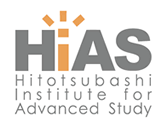Exchange Rates and Fundamentals: A General Equilibrium Exploration
Abstract:
Engel and West (2005) show that the observed near random-walk behavior of nominal exchange rates is an equilibrium outcome of a partial equilibrium asset approach when economic fundamentals follow exogenous first-order integrated processes and the discount factor approaches one. In this paper, I argue that the unit market discount factor creates a theoretical trade-off within a two-country general equilibrium model. The unit discount factor generates near random-walk nominal exchange rates, but it counterfactually implies perfect consumption risk sharing and flat money demand. Bayesian posterior simulation exercises based on post-bretten Woods data from Canada and the United States reveal difficulties in reconciling the equilibrium random-walk proposition within the canonical model; in particular, the market discount factor is identified as being much smaller than one. A relative money demand shock is identified as the main driver of nominal exchange rates.
| Report No.: | HIAS-E-19 |
|---|---|
| Author(s): | Takashi Kano |
| Affiliation: | Graduate School of Economics, Hitotsubashi University |
| Issued Date: | Revised April 2019 |
| Keywords: | Exchange rate; Present-value model; Economic fundamental; Random walk; Two-country model; Incomplete market; Cointegrated TFPs; Perfect risk sharing |
| JEL: | E31, E37, F41 |
| Links: | PDF, HERMES-IR , RePEc |











